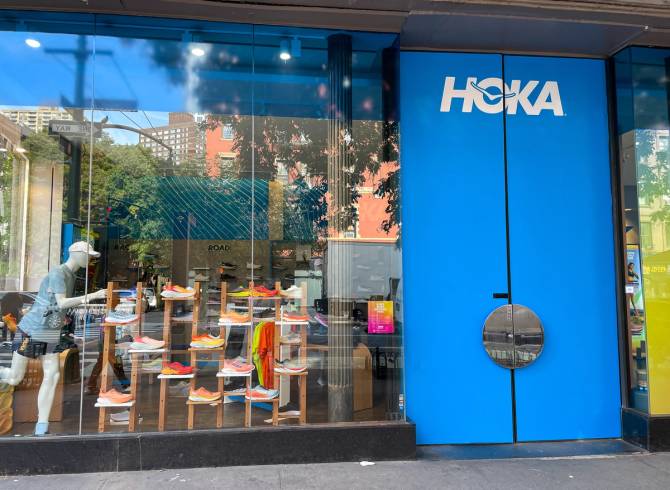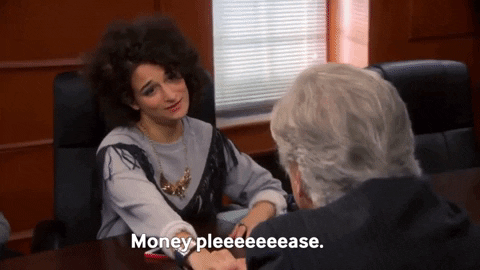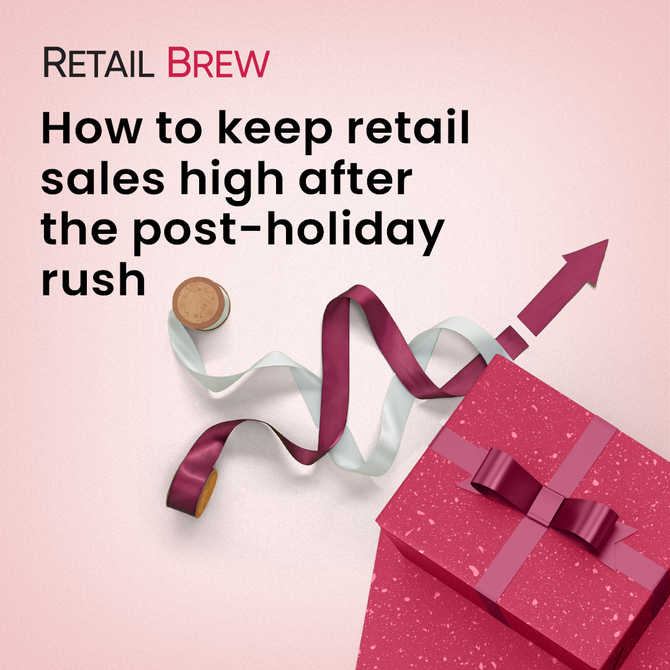Good afternoon! In today’s edition of “most dramatic retail news,” we’re watching to see what happens with Justin Bieber and H&M, after the singer accused the brand of selling his likeness on products without his approval. Is it too late now for H&M to say, “Sorry?”
In today’s edition:
—Katishi Maake, Maeve Allsup, Erin Cabrey
|
|
MetaMarket, Metaverse Fashion Week, Meta
We want to give you guys big thanks for filling out our survey. As the year winds down, we wanted to know what our valued Retail Brew readers thought were the most overhyped and the most overlooked industry trends in 2022. So, we asked.
The request: that you weigh in on which trends in retail didn’t get enough attention this year—and which ones got way too much. Well, you answered, and here are the results:
Overhyped
Metaverse/NFTs: For the second year in a row, Retail Brew readers found the world of the metaverse to largely be a snoozefest. Nearly half of respondents (49.9%) said this trend was overhyped, which is not a surprise given that crypto markets have had a *tough* 2022.
But this year saw even more brands dip their toes into the metaverse, including Nike, Adidas, Zara, and Gucci.
-
“I think [brands are] trying to see what the potential applications are,” Sky Canaves, senior analyst at Insider Intelligence, previously told Retail Brew. “They’re trying to establish road maps for routes that don’t yet exist, but they’re trying to get a sense of what the landscape is going to be like.”
The supply chain: One of the most overlooked trends from last year lost steam this year as inflation took the spotlight (more on that later). Roughly 14% of Retail Brew readers said concerns regarding supply chain were overhyped.
Retailers, however, are still reeling from the supply-chain disasters that plagued 2021. Laura Burget, co-founder of Canadian beauty brand Three Ships, previously told Retail Brew that while the company has only 18 SKUs, ingredients for its products are still very difficult to track as they come from multiple countries.
Keep reading here.—KM
|
|
|
In the quest for new customers, don’t sleep on repeats. Returning customers are 50% more likely than new ones to make another purchase, and they spend 33% more on average.
So, how do you attract these coveted peeps to your biz and set yourself up for recurring wins? With subscriptions. They help offset today’s high cost of customer acquisition and solidify a core group of returning shoppers.
Recharge outlined actionable tactics to help you build out your customer acquisition strategy with subscriptions in mind, including:
- optimizing your site for sales
- launching a compelling subscription landing page
- offering one-time and subscription purchase options
And oodles more. If you wanna make the most out of your best customers, dig into Recharge’s timely write-up right here.
|
|
Roman Tiraspolsky/Getty Images
Hokas. If you haven’t seen the extremely cushioned, overstated profile of the fashion world’s latest shoe obsession, you probably haven’t been spending much time on the internet. Or at trendy brunch destinations frequented by Gen Z. Or on the streets of New York. Or San Francisco…You get the picture.
The distinctive running shoe, initially designed for long-distance racing in the mountains, has risen to lifestyle and fashion fame in recent years, and become a household name among runners and non-runners alike.
We sat down with Hoka’s VP and US general manager Steve Doolan in December to chat about going viral, meeting Gen Z in the middle, doubling down on brick and mortar, and staying true to the running community.
Doolan, an avid skier, cyclist, and gearhead, has been involved with the Hoka brand for 13 years. “I just happened to be in the right place at the right time,” he told Retail Brew.
That right place was Outdoor Retailer in Salt Lake City, Utah, in 2010, when Hoka was presented in the US for the first time. And while Hoka’s “ride” (what it feels like to run in a shoe) was almost antithetical to the barefoot movement in the running world at the time, Doolan said he was hooked from the get-go. Today, he oversees the brand’s wholesale, DTC, marketing, and merchandising arms.
A lot has changed for the brand since those early days in Utah, and Doolan has had a front-row seat.
Keep reading here.—MA
|
|
Parks and Recreation/NBC via Giphy
VCs went on somewhat of a financing spree last year, but in 2022, funding was a bit harder to come by. The year saw 102 US retail deals through December 9, totalling $3 billion, down from last year’s 175 deals summing $5.4 billion, per PitchBook data.
This year’s top five largest funding rounds saw a few companies whose funding rounds are starting to dig deep into the alphabet, along with a few fresher faces, but they’re still (like last year) mostly centered around one industry.
5. Foxtrot: $100 million in January
Convenience retailer Foxtrot waltzed into the new year by securing $100 million in series C funding, bringing its total funding to date to $160 million. The fresh capital helped the company grow its brick-and-mortar footprint, with 20+ stores including recent openings in Bethesda, Maryland, and multiple locations in Austin, Texas.
-
CEO Mike LaVitola told us in October that the quality and differentiation of its inventory, like prepared food and wine, helps it compete with others in the space.
4. GrubMarket: $120 million in September
Food-tech company GrubMarket raked in $120 million in an oversubscribed series E round at a valuation of over $2 billion, with investors including General Mills’s venture arm, 301 Inc. The company, which provides software and helps connect farmers and food suppliers with customers like grocers, restaurants, and schools.
- GrubMarket CEO Mike Xu told Bloomberg the business is profitable and the $$ would be used for mergers and acquisitions.
Keep reading here.—EC
|
|
|
Abercrombie & Fitch isn’t who they used to be. Check out this case study from Marketing Brew examining how Abercrombie changed their brand image from exclusive to inclusive, met their target demo where they are, and used influencers of all types to gain a new (and renewed) customer base and audience.
|
|
Today’s top retail reads.
Master of art: Inside the leadup to Louis Vuitton’s second collaboration with Japanese artist Yayoi Kusama, who is renowned for her “Infinity Rooms” installations. “One of the aspects of [Kusama’s] work is happiness, and we thought it would be really refreshing after the pandemic to have the worlds of Vuitton and the world of Kusama meet again,” said Louis Vuitton exec Delphine Arnault. (WWD)
By the books: After a decade that saw Barnes & Noble close over a hundred brick-and-mortar stores, the book retailer is planning to open more stores than it closes in 2023. (the Wall Street Journal)
Off the vine: Inside a Napa Valley real estate deal that’s unusual for one of the country’s top wine regions: A popular winery sold its flagship property and tasting room to Fiji Water owner the Wonderful Company, but is leasing the space back for the time being. (San Francisco Chronicle)
|
|
The holiday season is one of the most significant moments for retailers, bringing in nearly $800 billion annually.
But what happens after the holiday rush? Many businesses enter a so-called “post-holiday slump,” which can pose a serious financial challenge if they’re not prepared to combat it.
Don’t let that happen to you. Download Retail Brew’s guide for quick tips on finding sales success in the new year.
Read it here.
|
|
-
Mondelez International, owner of Cadbury and Toblerone, is selling part of its gum business—including Trident, Bubblicious, Dentyne and Chiclets—for $1.35 billion.
-
Walmart is beginning drone delivery in Arizona, Florida, and Texas.
-
VF Corp., owner of brands including The North Face and Vans, is reportedly mulling the sale of Jansport.
-
The UK is reinstating a freeze on alcohol taxes as part of a plan to boost economic growth.
-
DSW owner Designer Brands acquired footwear brand Topo Athletics.
-
A Chick-fil-A franchise in North Carolina was fined for reportedly allowing teens to use dangerous machinery and paying some employees in meal vouchers rather than wages.
-
Nike will report its fiscal second quarter earnings later today.
|
|
What happened in the world of retail this week in…1871 and beyond? Retail Brew takes you way, way, way back.
- On December 18, 1988, the Pillsbury Company agreed to a $5.68 billion sale to British conglomerate Grand Metropolitan PLC.
- On December 19, 1871, Albert L. Jones was granted a patent for an “improvement in paper for packing,” which could be used to make boxes, and which he originally used to wrap glass bottles. Today, it’s more commonly known as corrugated cardboard.
- On December 21, 2012, rapper Flavor Flav opened Flav’s Chicken & Ribs in Michigan, his third restaurant attempt.
- On December 23, 2005, Amazon announced its highest-priced holiday season sale of that year: a pair of $94,000 diamond earrings.
|
|
Catch up on the Retail Brew stories you may have missed.
|
|
|
Written by
Katishi Maake, Maeve Allsup, and Erin Cabrey
Was this email forwarded to you? Sign up
here.
|
ADVERTISE
//
CAREERS
//
SHOP 10% OFF
//
FAQ
Update your email preferences or unsubscribe
here.
View our privacy policy
here.
Copyright ©
2022
Morning Brew. All rights reserved.
22 W 19th St, 4th Floor, New York, NY 10011
|
|









